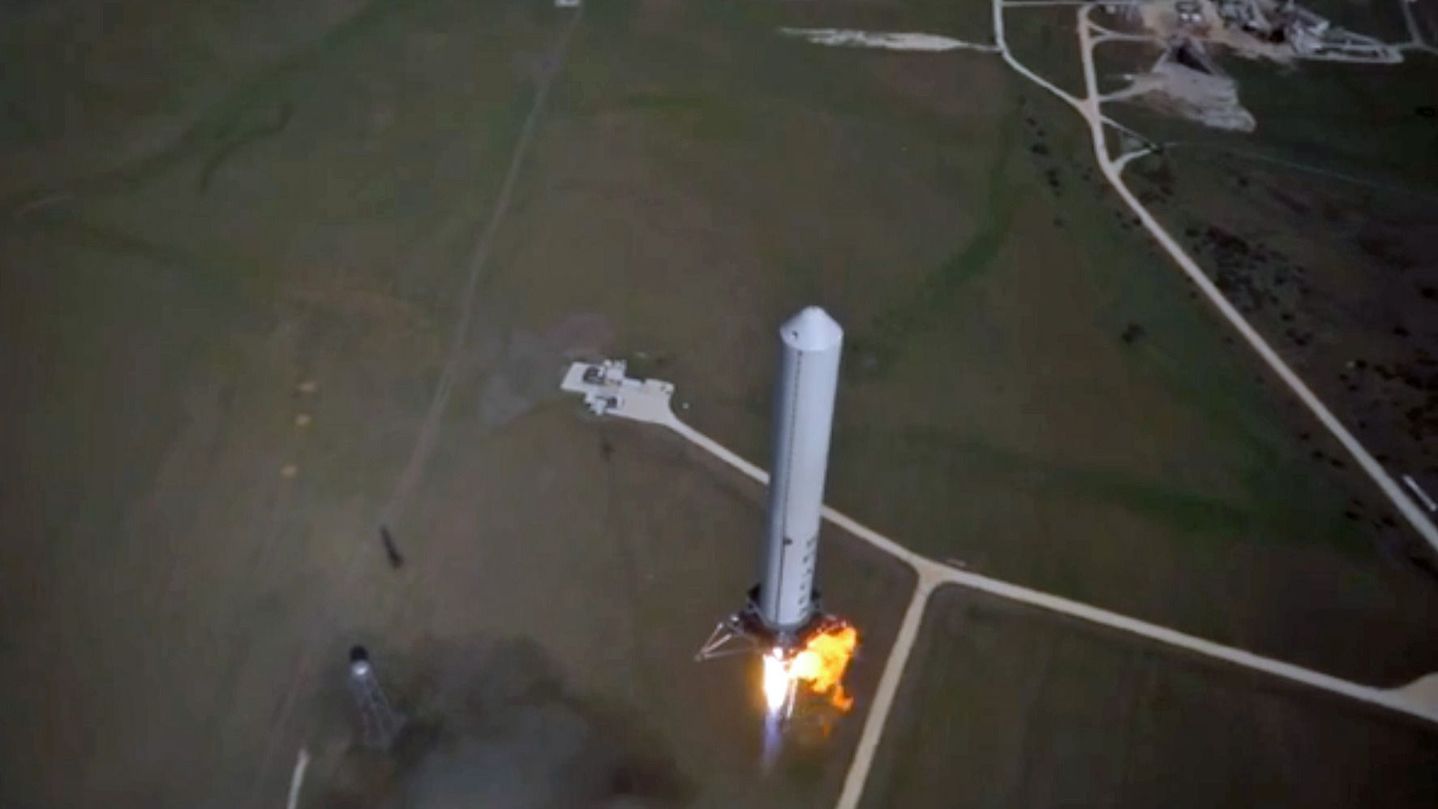SpaceX’s Record-Setting Grasshopper Flight Caught on Drone Camera

Private spaceflight company SpaceX has been testing its Grasshopper rocket over the past few months, but it set a record last week with its latest launch in which it flew 2,440.94 feet in the air — the vehicle’s highest leap yet. Using a single camera hexacopter drone, SpaceX was able to get closer than ever to record the video above, which the company released Monday. As the rocket climbed gracefully into the air, the drone camera — which you can see in the right-hand corner of the frame — adjusted to capture the seemingly slow launch. Grasshopper soared in an almost-perfect straight line — quite different from its August launch, when it leapt sideways. The 10-story-high Grasshopper is one of SpaceX’s most outside-the-box experiments. Most rockets burn up when reentering Earth’s atmosphere, but Grasshopper is a reusable Vertical Takeoff Vertical Landing (VTVL) vehicle built to withstand these harsh conditions and return to the planet’s surface intact. Grasshopper holds the first-stage tank of the Falcon 9 rocket, which boosts SpaceX’s unmanned Dragon capsule to the International Space Station. BONUS: 10 Rare of Inside-Views of Spacesuits Inside the Spacesuit: 10 Rare Views of a NASA Icon Alan Bean Spacesuit Astronaut Alan Bean wore this A7-LB suit on the 1973 Skylab 3 mission. Bean logged 1,671 hours and 45 minutes in space, including more than 10 hours of EVA (extra vehicular activity). Image: Smithsonian Institution, Mark Avino Boot X-Ray An x-ray of an Apollo-era “overboot” shows the adjustment strap that allowed astronauts to tighten this boot over another shoe that was attached to the spacesuit. Image: Smithsonian Institution, Mark Avino Glove Astronauts wore special gloves during lunar excursions. Made with rubber and Neoprene interior bladders, gloves covered hands completely to the wrist and were attached to the arms of the spacesuit with aluminum rings. Image: Smithsonian Institution, Mark Avino Helmet X-Ray This 1964 A4-H “Universal” helmet was designed to fit on more than one suit. The x-ray reveals ball bearings in the neck ring that allowed the helmet to move right and left without restriction. Image: Smithsonian Institution, Mark Avino Phase I Apollo Helmet X-ray of a helmet that was developed for the Phase I Apollo program. Image: National Air and Space Museum, Smithsonian Institution, Mark Avino Mark V Spacesuit The Mark V suit was relatively flexible and incorporated design elements that allowed for a fuller range of movement. Image: Smithsonian Institution, Mark Avino Apollo Spacesuit Overshoe X-ray of an extravehicular (EV) overshoe that was designed to be worn over the Apollo spacesuit boots while an astronaut was walking on the Moon. Image: National Air and Space Museum, Smithsonian Institution, Mark Avino Alan Shepard’s Apollo 14 Spacesuit An x-ray of Alan Shepard’s Apollo 14 spacesuit allows curators and conservators to “see” inside space clothing — a task that had previously been done by peering through the neck or the wrist with a flashlight. Image: X-ray by Roland H. Cunningham and Mark Avino Freedom 7 Spacesuit Alan B. Shepard, one of the original “Mercury […]